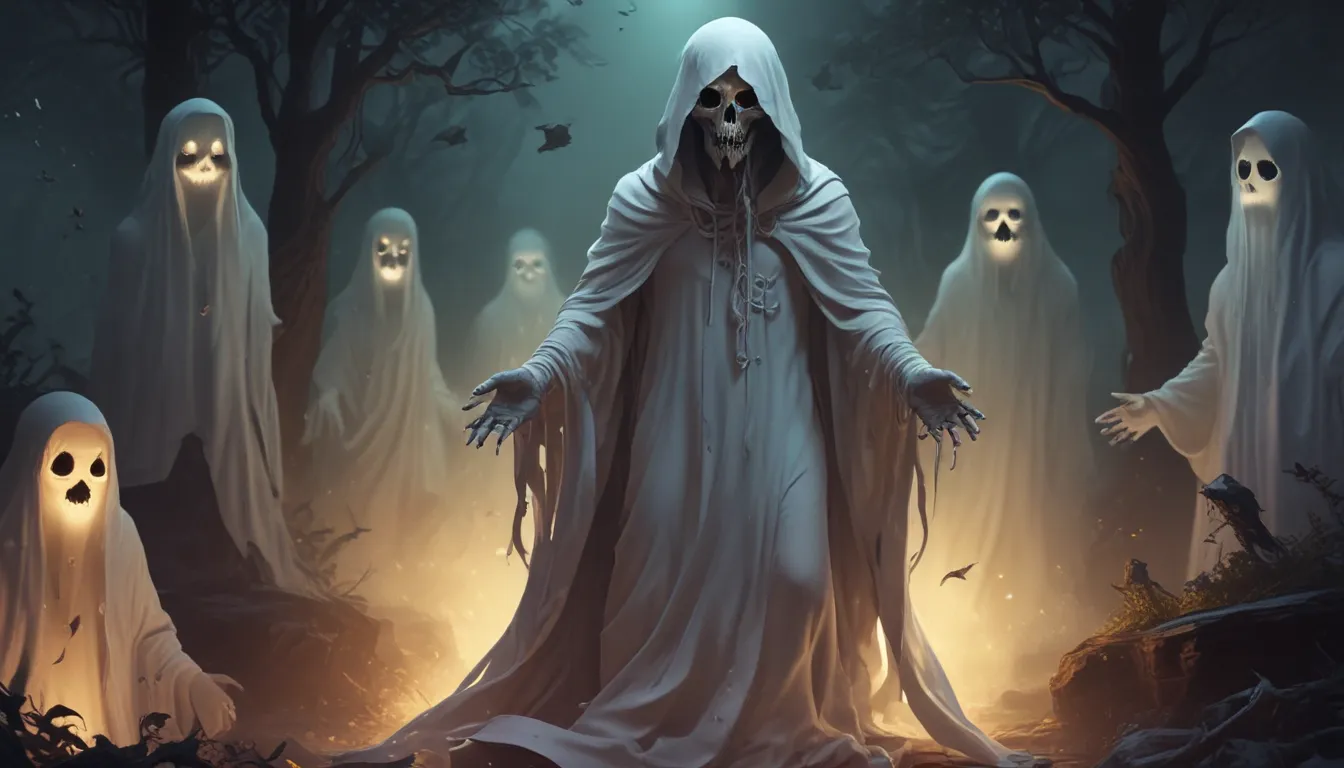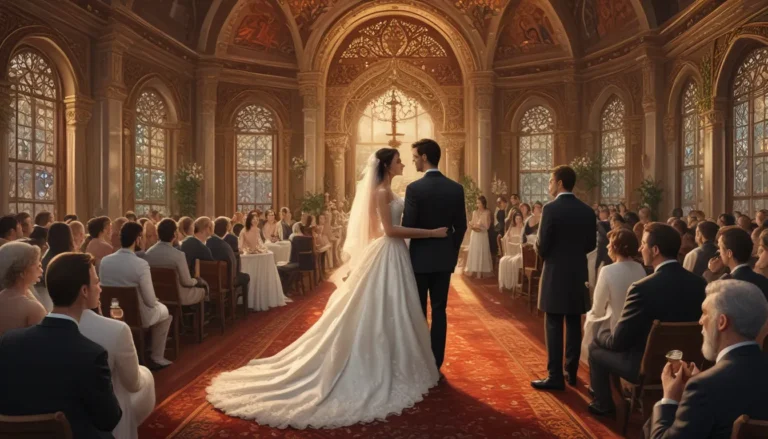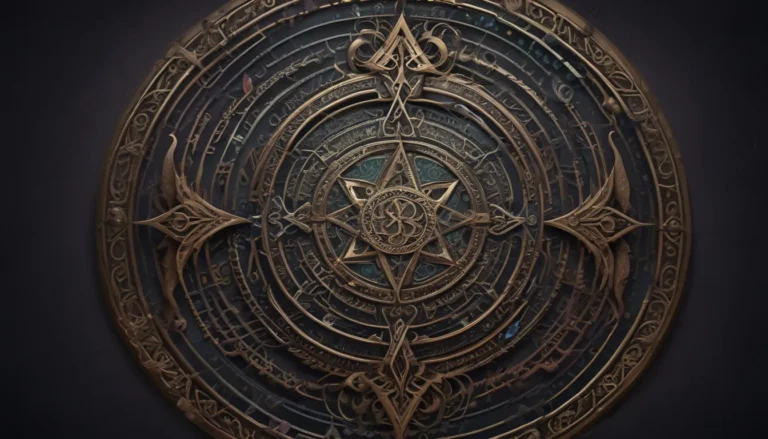The images in our articles may not match the content exactly. They are used to grab your attention, not to show the exact details in the text. The images complement the text but do not replace it.
Welcome to a fascinating journey through the realm of ghosts, where cultural beliefs and folklore come together to create a diverse tapestry of supernatural entities. Ghosts exist in various forms around the world, reflecting the unique stories, traditions, and beliefs of different cultures. From benevolent spirits to vengeful apparitions, the mysteries surrounding ghosts continue to captivate and intrigue us.
Bhoot: The Lingering Spirits of Indian Culture
Let’s begin our exploration with the Bhoot, also known as Bhuta, a type of ghost originating from Indian culture. These spirits, reminiscent of traditional Western ghosts, are believed to be the lingering souls of the deceased who remain in the world of the living for various reasons. The Bhoot’s presence is often attributed to factors such as the circumstances of their death, unfulfilled desires, or the absence of proper funerary rites.
These ghostly beings typically appear in human form, although they possess the ability to transform into animal shapes. One distinctive feature of Bhoots is that their feet always face backward, revealing their supernatural nature. They are said to avoid sacred places and may be dressed in white, speaking in nasal voices. The cultural significance and folklore surrounding Bhoots offer a window into the rich tapestry of Indian mythology and beliefs.
Doppelgänger: The Mirror Image of Misfortune
Moving on to Northern Europe, we encounter the Doppelgänger, a ghostly entity that mirrors the appearance of a living person. Encountering one’s Doppelgänger is often seen as a harbinger of bad luck, with legends linking them to tragic outcomes. While commonly associated with German folklore, similar entities, such as the “fetch” in Irish folklore, can be found in diverse cultures across the globe.
In Philippine folklore, specific rituals are believed to ward off the ill effects of encountering a Doppelgänger. From turning clothes inside out to taking a bath to wash away bad luck, these customs reflect a blend of superstition and cultural beliefs. The concept of a spirit double, as seen in ancient Egyptian beliefs, adds a layer of complexity to the narrative, highlighting the universal fascination with the duality of existence.
Dybbuk: The Ambiguous Spirits of Jewish Folklore
In Jewish folklore, the Dybbuk emerges as a complex ghostly entity driven by unresolved regrets from its past life. These spirits seek to possess the living to fulfill their desires, resulting in morally ambiguous intentions. While some Dybbuks harbor malevolent motives, others may have benevolent goals, highlighting the diverse nature of these restless souls.
Jewish mystics, intrigued by the phenomenon of possession by Dybbuks, have explored the spiritual dimensions of these encounters. Rituals of exorcism and purification play a significant role in Jewish traditions, offering a way to release malevolent Dybbuks from their earthly attachments. The intricate interplay of spirituality and folklore in Jewish culture adds a layer of mystique to the narrative of the Dybbuk.
Ghost Ship: Haunting Tales of Phantom Vessels
Navigating the seas of folklore, we encounter the eerie phenomenon of ghost ships, phantom vessels shrouded in mystery and superstition. The Flying Dutchman, one of the most infamous ghost ships, symbolizes the dark allure of cursed seafaring tales. Legends of spectral ships sailing through stormy seas evoke a sense of foreboding and dread, symbolizing the eternal restlessness of lost souls.
The haunting story of the Flying Dutchman, marred by tragedy and cursed fates, resonates in maritime folklore worldwide. Encounters with ghost ships, such as the sighting by Prince George off the coast of Australia, fuel the imagination and perpetuate the enigmatic allure of these spectral vessels. The legacy of ghost ships continues to inspire seafaring myths, blending history with the supernatural in a captivating narrative.
Gjenganger: Restless Spirits in Scandinavian Folklore
In the realms of Scandinavian folklore, the Gjenganger emerges as a restless spirit seeking to draw the living into its spectral realm. These ghostly entities, often associated with murder or unresolved grievances, carry an air of danger and mystery. With their lifelike appearance and elusive nature, Gjengangers blur the boundaries between the living and the dead, heightening the sense of unease and uncertainty.
Scandinavian customs, such as the creation of funerary monuments called varps, reveal a cultural emphasis on appeasing the spirits of the departed. The tradition of tossing twigs on varps to honor the dead underscores the importance of respecting the boundaries between the living and the deceased. The folklore surrounding Gjengangers offers a glimpse into the supernatural beliefs and traditions of Scandinavian heritage.
Ifrit: Fiery Spirits of Islamic Mythology
Delving into Islamic mythology, we encounter the Ifrit, enigmatic spirits described as embodiments of fire and smoke. These supernatural beings, known for their malevolent tendencies, straddle the line between demonic entities and restless souls seeking redemption. The Ifrit’s ability to carry out divine will, often through avenging past wrongs, adds a layer of complexity to their character.
Islamic folklore weaves intricate tales of Ifrits engaging in noble acts, despite their inherently malicious nature. Stories of redemption and spiritual transformation highlight the fluidity of these supernatural beings, whose motives and actions defy simple categorization. The folklore surrounding Ifrits offers a glimpse into the intricate tapestry of Islamic mythos, blending ancient traditions with timeless narratives of spirits and redemption.






